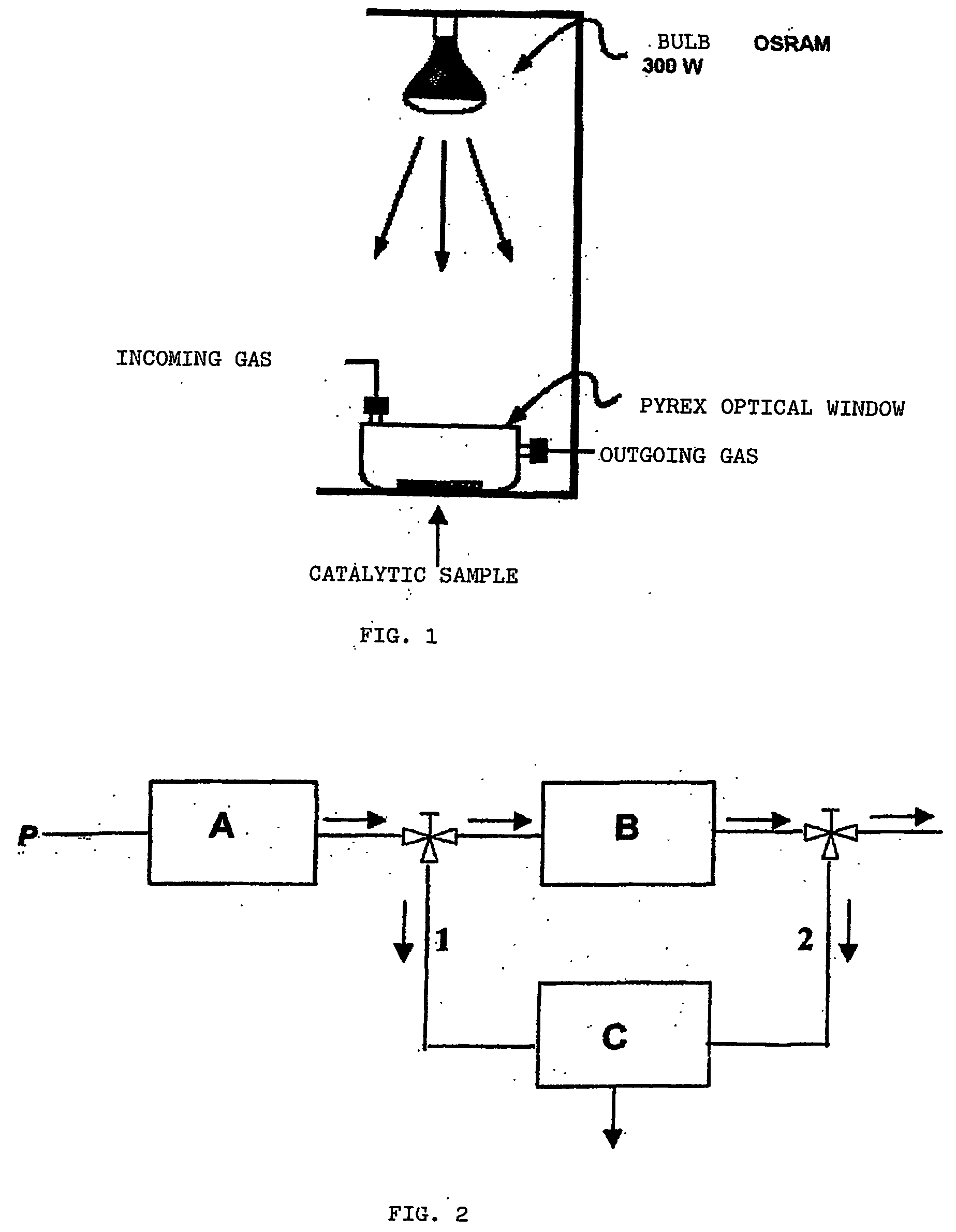Cement-based paving blocks for photocatalytic paving for the abatement of urban pollutants
- Summary
- Abstract
- Description
- Claims
- Application Information
AI Technical Summary
Benefits of technology
Problems solved by technology
Method used
Image
Examples
example 1
[0081] Cement-based formulation with high photocatalytic activity for the production of the surface layer of photocatalytic paving blocks.
OptimalDry mixn.11Grey cement Type II / B-LL 42.5 R%13 ÷ 1715.4Silica sand (0.25-4 mm)%82.5 ÷ 85.584Titanium Dioxide%0.3 ÷ 0.90.6
[0082] The quantity of water ranges from 6 to 6.5% in mass of the inorganic materials in dry state.
example 2
[0083] Cement-based formulation with high photocatalytic activity for the production of the surface layer of photocatalytic paving blocks.
OptimalDry mixn.22Grey cement Type II / A-LL 42.5 R%19 ÷ 2320.6Silica sand (0.25-4 mm)%77 ÷ 8078.6Titanium Dioxide%0.6 ÷ 1.00.8
[0084] The quantity of water ranges from 7 to 7.5% in mass of the inorganic materials in dry state.
example3
[0085] Some samples of paving block are prepared comprising a surface layer having the composition described in Examples 1 and 2, the NOx abating properties of which are verified.
Instruments
[0086] NOx are analyzed using a Monitor Labs Model 8440E instrument, which functions according to the principle of chemiluminescence detection. The instrument has four sensitivity ranges:
[0087] from 0.2 to 5 ppm (parts per million); from 0.1 to 10 ppm; from 0.05 to 5 ppm; from 0.2 to 10 ppm.
[0088] As a function of the sensitivity ranges chosen, the precision of the instrument is 4 ppb (parts per billion) out of 100 ppb or 2.5 ppb out of 400 ppb.
Experimental Set Up
[0089] Diagram I hereunder, as shown in FIG. 2, describes the method of measuring the degree of NOx and NO2 abatement through photocatalytic action.
Diagram I
[0090] A—is a mixing chamber wherein a mixture of NO / NO2 or of NO2 salts is diluted in air to provide the established quantity of pollutants. The adopted experimental proc...
PUM
| Property | Measurement | Unit |
|---|---|---|
| Length | aaaaa | aaaaa |
| Length | aaaaa | aaaaa |
| Fraction | aaaaa | aaaaa |
Abstract
Description
Claims
Application Information
 Login to View More
Login to View More - R&D
- Intellectual Property
- Life Sciences
- Materials
- Tech Scout
- Unparalleled Data Quality
- Higher Quality Content
- 60% Fewer Hallucinations
Browse by: Latest US Patents, China's latest patents, Technical Efficacy Thesaurus, Application Domain, Technology Topic, Popular Technical Reports.
© 2025 PatSnap. All rights reserved.Legal|Privacy policy|Modern Slavery Act Transparency Statement|Sitemap|About US| Contact US: help@patsnap.com


